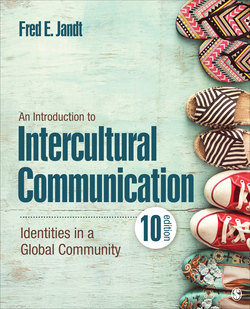Читать книгу An Introduction to Intercultural Communication - Fred E. Jandt - Страница 11
На сайте Литреса книга снята с продажи.
Learning Objectives
ОглавлениеAfter studying this chapter, you will be able to:
1 Explain the regulators of human behavior and identity
2 Understand the meanings and connotations of the terms culture, subculture, co-culture, subgroup, counterculture, and microculture
3 Explain why this text recommends we prioritize the terms culture and community over other terms to describe those concepts
4 Describe how communication is defined by different cultures and understand how people of diverse cultures communicate differently
5 Describe the relationship between culture and media
Have you ever considered why there’s not just one human culture rather than many cultures? Biologists Rebecca L. Cann, Mark Stoneking, and Allan C. Wilson (1987) studied genetic material from women around the world and contend that all humans alive today share genetic material from a woman who lived some 200,000 years ago in sub-Saharan Africa. Their African “Eve” conclusion is supported by linguistic observations. Cavalli-Sforza, Piazza, Menozzi, and Mountain (1988) have shown that considerable similarity exists between Cann et al.’s tree of genetic relationships and the tree of language groups, which hypothesizes that all the world’s languages can be traced to Africa.
The languages that vary the most from other languages today can be found in Africa. This suggests that these African languages are older. Africa’s Khoisan languages, such as that of the !Kung San, use a clicking sound that is denoted in writing with an exclamation point. Such evidence, along with genetic evidence, suggests that almost 7 and a half billion of us alive today share ancestry from one group in Africa. Yet among all of us there are diverse ways of understanding the world, languages, beliefs, and ways of defining our identities. In this chapter, first you’ll read about the regulators of human behavior and identity. Then you’ll read about the related concepts of culture, subculture, co-culture, subgroup, and microculture. Finally, you’ll read about the concept of communication as something that is itself a product of culture, meaning that how communication as a concept is defined and how communication is performed are very much part of each cultural group—so much so that it has been said culture and communication can only be understood together.
